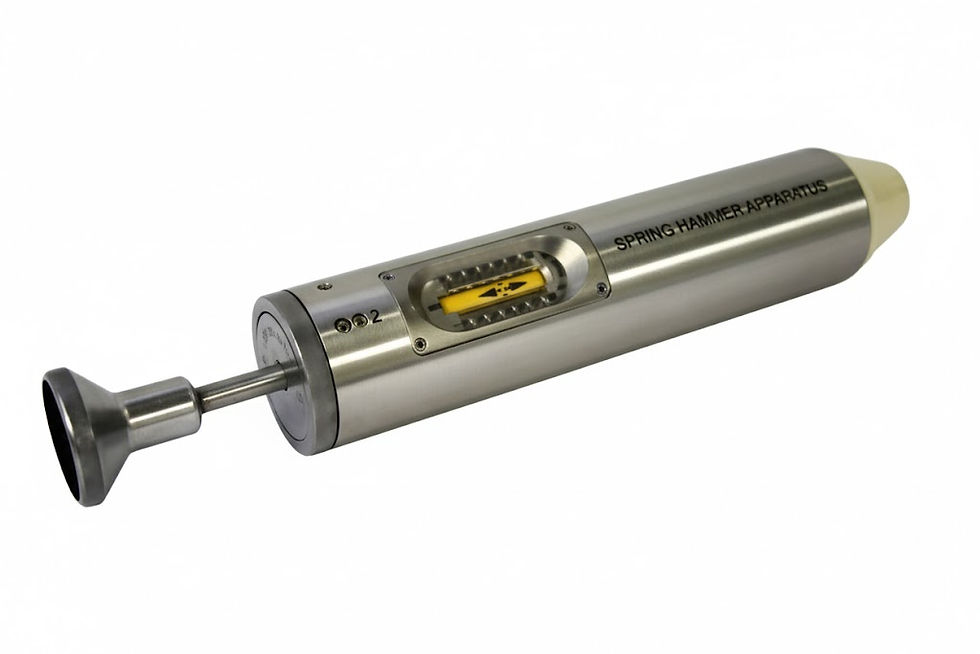⚙️ The Spring Hammer Test (Test Ehb)
- Dunel Atlantic
- 5 days ago
- 1 min read
The Spring Hammer Test, or Test Ehb, is the counterpart to Eha and is used to verify the resistance of an enclosure to low-energy impacts that could result from careless handling, minor accidental drops, or everyday bumps.
Methodology and Application
The Ehb test utilizes a Spring Hammer, which is a handheld device that stores potential energy in a spring and releases it rapidly to deliver a defined impact pulse.
Mechanism: The device is manually pressed against the surface of the equipment under test. When the internal striking pin is pushed back far enough, a mechanism triggers the release of the compressed spring, driving the striking element against the test sample. This ensures the impact energy is independent of the user's force or angle.
Energy Range: This test is used for low impact energies, specifically covering levels from 0.14 J up to 1 J.
IK Rating Correlation: Ehb is the required test procedure for the lower end of the IK Code, corresponding to ratings from IK01 (0.14 J) up to IK06 (1 J).

Common Use: It is typically applied to enclosures for household appliances, office equipment, indoor electronics, and small devices where accidental drops or light knocks are the main concern, rather than heavy abuse.
Key Feature
The defining characteristic of the Spring Hammer (Ehb) is its portability and consistency. It allows technicians to apply the exact required low-level energy impact precisely across various points on the enclosure's surface, including corners and edges, ensuring uniformity in testing.



Comments